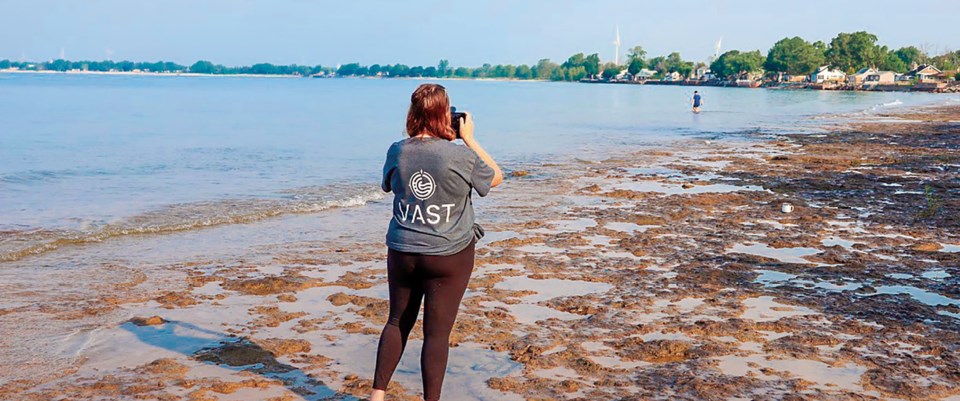Local observations of coastal conditions needed
The Lake Erie shoreline will soon benefit from a new program that engages citizen scientists—that’s us— in monitoring the changing conditions along the waterfront and submitting photos, observations, and measurements to provide accurate and near real-time information.
Called VAST (Visual Assessment Survey Tool), the program is a collaboration of the Niagara Peninsula Conservation Authority, Niagara College, and the Niagara Coastal Community Collaborative (Niagara Coastal). The three organizations hope to receive data from residents, visitors, and volunteer participants that will inform the actions they take to counter the effects of erosion, invasive algae, and other threats to the Lake Erie shoreline.
Residents along the Lake Erie shore already know how susceptible the waterfront is to erosion, high water levels, and algae, but the effects of climate change are noticeably increasing the impact on the fragile lake front. The coastal areas of the Great Lakes are exposed to many stressors, according to the three participating organizations, and are highly susceptible to environmental degradation.
Stations will be set up in about 30 locations along the shore that will explain the process and encourage people to submit pictures, stories, and observations every day to provide the ongoing information that will be used to pinpoint problems and keep track of the ever-changing conditions along the shore. Among the locations where the stations will appear are Morgan’s Point and Long Beach Conservation Areas. At each station there will be a QR code that will link participants to the website and explain what they can do to join in. The VAST website assures users that all they need is their phone. Once they locate a VAST station, they scan the QR code, navigate to the relevant survey module (erosion or cladophora algae), complete the survey, and take images using the phone dock. Those who don’t have the time or inclination to complete the survey are encouraged to send photos. Those who want to participate more fully in the program can become a VAST volunteer. At present there are 27 such volunteers, who have already submitted over 300 photos of the shoreline.
Annie Michaud is a Professor of Environmental Studies at Niagara College, and she sees the program as a perfect way for those who live along or near the lake to become stewards of their environment.
“Community-based initiatives are extremely valuable as they establish a foundation for watershed residents to become actively involved in the health of their coast,” she says. Michaud adds that she sees benefits for her students as well. “Initiatives such as VAST will provide unique learning opportunities for students to gain hands-on experience while also supporting the local environment here in Niagara.”
Niagara Coastal describes itself as an organization dedicated to “expand local action to build a healthy and resilient Lake Erie coastal ecosystem that supports the community’s economic, recreational, spiritual, and environmental needs.”
To that end, Gregary Ford, the group’s Executive Director, says that, “VAST allows us to tap into the rich network of local expert knowledge by engaging those who have that intimate familiarity in collecting important information about their shorelines.”
All three of the organizations that are cooperating on the VAST initiative see the benefits of a collaborative approach to collecting information that each can use in its efforts to protect the fragile Lake Erie shoreline.
Geoff Verkade is the Senior Manager of Integrated Watershed Planning and Information Management at the Conservation Authority. “Community partnerships are essential to our work,” he says, “and our success is dependent upon working in collaboration with partners in conservation.”
VAST is financed by a grant from the Great Lakes Local Action Fund, established by the province to assist small-scale community projects that will provide a positive impact on the Great Lakes. More information about the VAST program can be found at niagaracoastal.ca/vast



